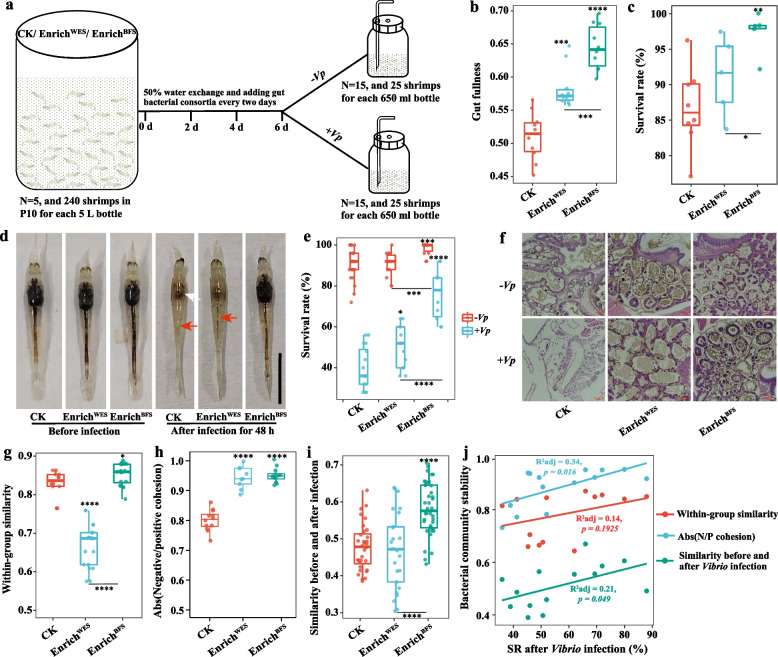Fig. 4.
Effects of bacterial consortia addition on the phenotypic characteristic, Vibrio infection resistance, and bacterial community of shrimp postlarvae. a Schematic diagram of the experimental procedure. The bacterial consortia were added to the postlarvae system every 2 days, and the shrimp were infected by the pathogenic Vibrio parahaemolyticus after 6 days of culture. b Gut fullness. c Survival rate after bacterial consortia addition for 6 days. d Phenotypic characteristics of postlarvae after bacterial consortia addition and Vibrio infection. White and red arrows indicate the hepatopancreas and gut of shrimp, respectively. Bar = 1 cm. e Survival rate of shrimp after Vibrio infection. f Histological sections of hepatopancreas from postlarvae. g The within-group similarities of bacterial community. h The absolute value of negative:positive cohesion ratio (N/P cohesion) of bacterial networks. i The bacterial community similarities before and after Vibrio infection in the control and bacterial consortia addition groups. The boxes represent the median and interquartile range, and whiskers range from minimum to maximum values. Different asterisks indicate a significant difference at **p < 0.01, ***p < 0.001, and ****p < 0.0001 based on Student’s t test. j The linear relationships of bacterial community stability parameters and survival rates after Vibrio infection. Adjusted R2 values and the significance levels are displayed for each of the linear regressions. WES, Water exchange system; BFS, Biofloc system; PBS, Phosphatic buffer solution; EnrichWES, Bacterial consortium obtained from WES shrimp; EnrichBFS, Bacterial consortium obtained from BFS shrimp; − Vp, non-Vibrio infection; + Vp, Vibrio infection

